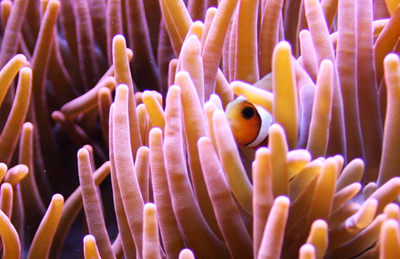Ask any group of young children to name their favorite saltwater fish, and chances are nearly all of them will reply “the clownfish.” Of course, to most kids, “clownfish” is synonymous with “Nemo,” so the species they have in mind is Amphiprion ocellaris, not one of the other 28 Amphiprion species or the single species in the genus Premnas.
In any case, owing to Nemo’s iconic nature, many kids are taken with the idea of keeping him in a home aquarium. And naturally, if they’re going to keep Nemo, then his host anemone needs to be part of the package, as well. Trouble is, as every experienced hobbyist knows, while A. ocellaris can be a good choice for kids’ tanks (with appropriate adult supervision and assistance, of course), anemones most decidedly are not kid-tank-friendly. Heck, most aren’t even adult-tank-friendly.
So how can parents persuade eager kids that keeping Nemo and his anemone together is a bad idea? Here are some talking points that might help make the case:
Nemo will be perfectly happy without an anemone
Kids, more so than adults, tend to anthropomorphize animals—which, in this case, is perfectly understandable since Nemo actually talks and exhibits other human-like attributes in the cartoon. So, it’s only normal for them to assume a clownfish will be “lonely” or “afraid” without a host anemone in the tank. A good way to counter this concern is to explain that clownfish in nature use anemones for protection from predators, which won’t be present in the aquarium (unless you put them there). Therefore, Nemo will be perfectly content without an anemone once he realizes there’s nothing to fear in the tank.
Anemones are needed in nature
Notwithstanding the widespread captive propagation of bubble-tip anemones (Entacmaea quadricolor), most of the other clownfish-hosting anemone species on the market are predominantly wild-caught. Parents should explain to their child that anemones grow and reproduce very slowly, so every specimen taken from the wild for aquarium purposes is one less in nature to provide a safe home for Nemo’s cousins.
Anemones can get hurt in aquariums
It might be hard for a child to visualize, but it could help your case to explain that anemones are animals capable of moving around when they aren’t happy with their conditions—and when they move, they can get into all sorts of trouble (stuck on powerheads, stinging/stung by neighbors, etc.) and possibly even die in the process.
Anemones often don’t last in captivity
While anemones can live for many, many years in the wild, most aquarium specimens—particularly those kept by inexperienced hobbyists under inappropriate conditions—have a significantly shortened lifespan.
Keeping an anemone is much more costly
Okay, this one might resonate with parents more so than kids, but when you compare the relative costs of the high-intensity reef-grade lighting needed to keep a host anemone and the normal-output lighting necessary for keeping a clownfish alone…well, let’s just say you’re talking many more weeks’ worth of allowance for the former!



